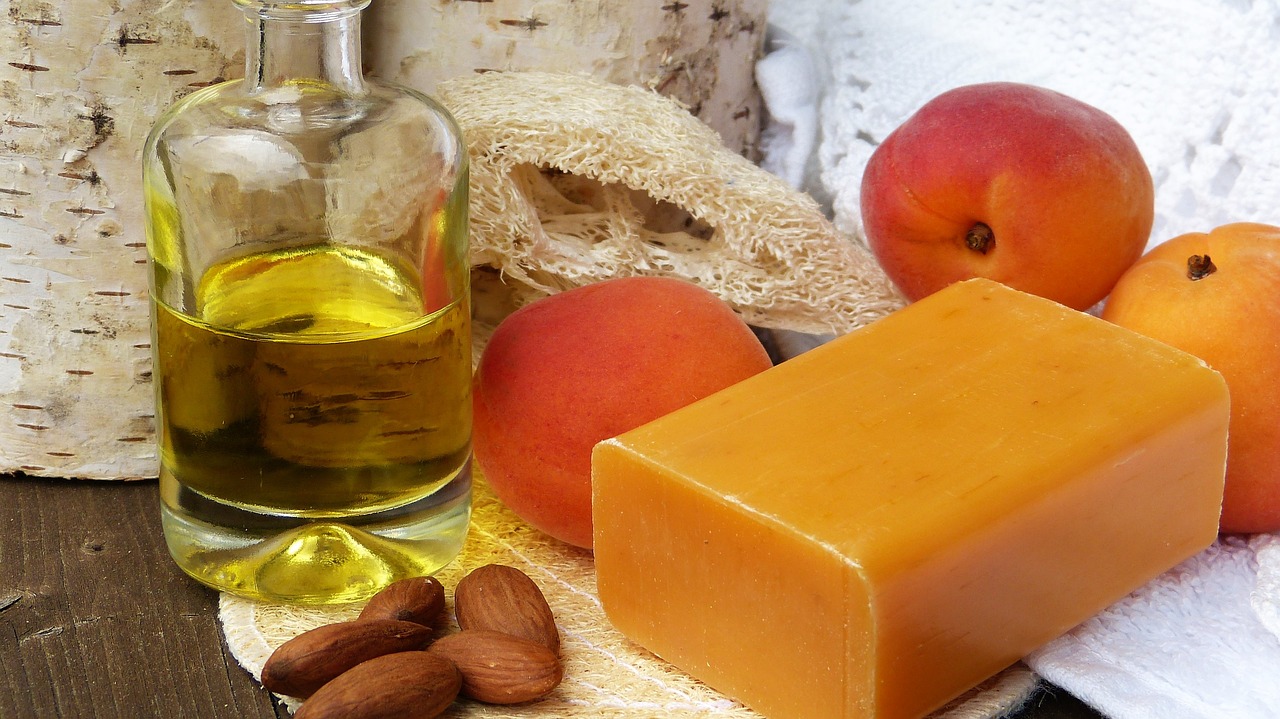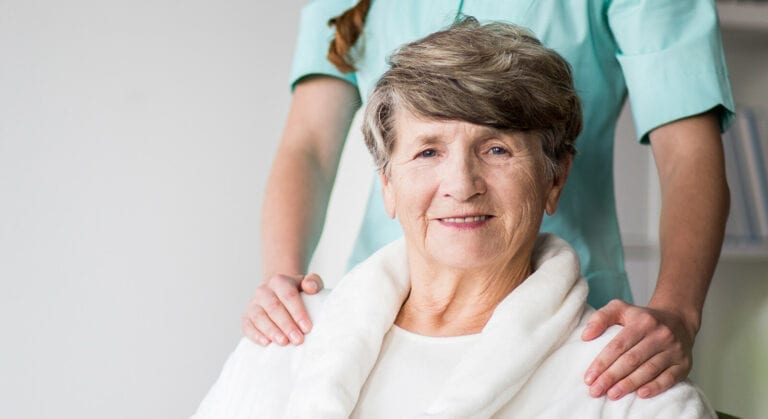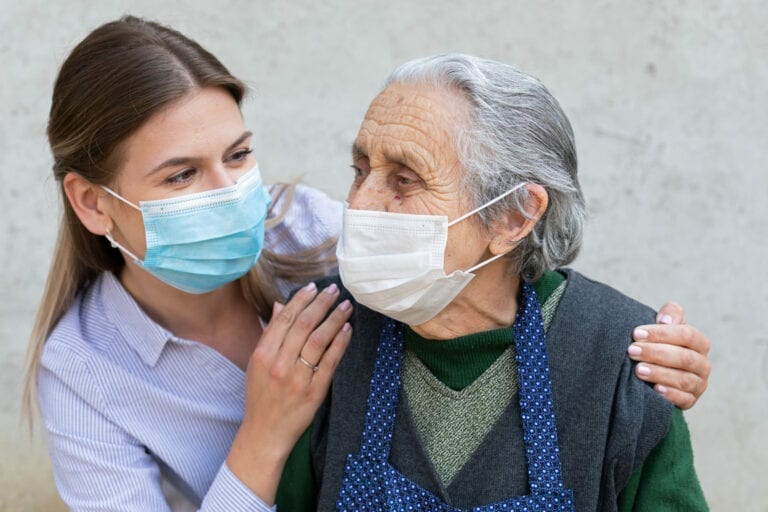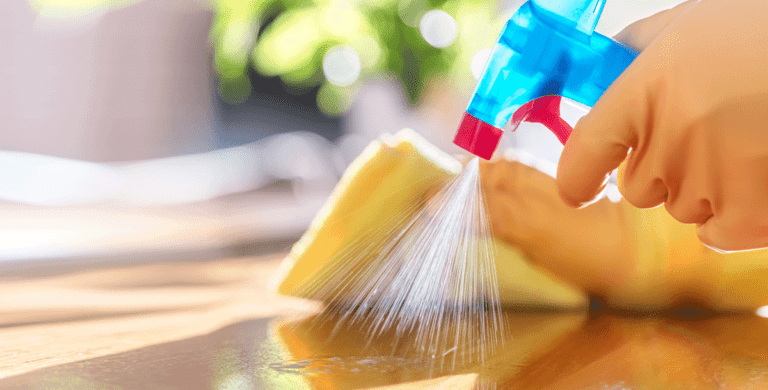A crucial step in maintaining healthy skin is bathing your loved one regularly. It can aid in preventing infections and is an excellent time to check for sores or rashes. Additionally, bathing makes your loved one feel clean and fresh.
One or two times per week, a person who can move around a little bit and must spend just a little amount of time in bed might be able to take a shower with some assistance. Or the individual might favour a daily half bath at the sink or with a basin.
A bed bath is required for someone unable to move well. While washcloths are frequently used, “sponge bath” is frequently employed. You can take a full bath while lying in bed without ruining the sheets.
Depending on how well your loved one can move, you may need to assist them with taking a bath. Because they are recovering from an illness or surgery, the person you care for might experience temporary difficulties with self-care.
Or perhaps you are caring for an older person who has memory loss and cannot remember how to bathe. Alternatively, you might be looking after a paralyzed person with a long-term inability to move. When showering, this person may require much more assistance.
Allow your loved one to clean themself as much as possible. Be as calm as you can while helping them undress and take a bath. Taking a bath can be embarrassing for both you and the person you’re caring for. If you are caring for a person who is the opposite sex from you, this might be especially true. They might feel more at ease if you remain composed and don’t appear embarrassed.
In this article, we will discuss shower sponge bath for the elderly, how it works, and how they can help you stay healthy at any age.
Table of Contents
- What is Shower Sponge Bathing?
- Why Is Sponge Bathing Crucial For Older Adults?
- How Often Should Seniors Bathe?
- What Equipment Do I Need for a Bed Bath?
- How to Give a Shower Sponge Bath to Your Loved Ones: A Step-by-Step Guide
- Why is it Important to Encourage Your Loved Ones Participation When Possible?
- Summing Up!
What is Shower Sponge Bathing?
A sponge bath is a way of washing the body that involves using a sponge or cloth to wash the entire body. It is also known as wet wash, water bath, water massage, and bubble bath.
Shower Sponge baths were used for centuries before modern showers came into existence. The practice of sponge baths was common in many cultures across the world. In India and Africa, it is still widely used even today.
There are several reasons why one may want to give sponge baths.
- The most obvious reason is that it can be very soothing and relaxing for an older person. It is also helpful in the case of bed sores and other skin conditions. The sponge bath can help ease discomfort, reduce pain and swelling, and promote healing and recovery.
- There are also some health benefits of giving sponge baths to the elderly. Some studies have shown that this practice can help improve the immune system, improve circulation, reduce stress levels, and even improve breathing in people suffering from respiratory issues.
This form of bathing has been used for centuries, with some people using sponges as their sole source of cleansing. In ancient Rome, sponge baths were prescribed by doctors as an effective way to treat common skin ailments like acne and eczema.
Sponge baths are still used today by many people who prefer this method over traditional bathing routines because they feel it helps them relax during stressful times. They also believe that this bathing can help relieve stress caused by different problems such as arthritis or even depression, which can be extremely difficult to cope with on your own.
Why Is Sponge Bathing Crucial For Older Adults?
While maintaining good hygiene should be important to everyone, it is especially crucial for seniors. Due to reduced immune system reactions, aging makes us more prone to sickness. Because of this, older persons may be more seriously impacted by inadequate personal hygiene.
Rashes, skin infections, eczema or psoriasis flare-ups, bacterial and fungal growth in skin creases or between toes, and even parasites on the skin and in hair might result from it. Some of this is contagious and has the potential to develop into more severe health issues, including sepsis (blood poisoning) or abscesses.
How Often Should Seniors Bathe?
Many family caregivers struggle to get an older adult to bathe. The most serious concern is that not bathing will result in skin or urinary tract infections. Seniors may also experience itching or develop a strong body odor.
But how frequently should seniors bathe to avoid health problems? We’ve compiled a few essential bathing tips to keep your elderly loved one clean and healthy while reducing arguments and stress.
1. There Is No Need to run Water
The simplest and most complete ways to clean the body are with a shower or a tub bath. However, a sponge bath would suffice if your elderly relative vehemently objects or has trouble moving around.
These detailed instructions on how to give a sponge bath were really helpful to us.
Here is a summary:
- Ensure your elderly loved one is warm and well-covered while gathering all your stuff.
- Starting with the face or head, work your way down the body, saving the dirtiest areas, the privates, for last.
- Only expose the area of the body that is now being cleaned for warmth and privacy.
- To avoid using unclean towels, wipe one area at a time and switch washcloths between portions.
2. Seniors Don’t Have To Take a Daily Shower
Although most Americans are accustomed to taking daily showers, it is not a strict requirement for optimum health.
Most seniors benefit from taking a bath at least once or twice weekly to prevent infections and skin deterioration. In between thorough showers, minimizing body odor can also be accomplished by wiping the feet, genitals, groin, armpits, and other skin folds using warm washcloths.
However, some dementia patients’ caregivers assert that daily bathing is simpler. When taking a bath becomes a normal part of someone’s day, they are considerably less likely to object. Naturally, when determining a bathing regimen, it’s important to consider your older adult’s individual medical conditions. Some people may need to bathe more regularly than others for medical reasons.
What Equipment Do I Need for a Bed Bath?
You should make sure you have the following before giving a bed bath:
· A Water Basin
You can use one basin, but you must change the Water whenever it becomes obviously unclean or excessively soapy.
· Washcloths
Try to have one washcloth for the body, perineal area, and face/neck.
· Towels
You should take at least three towels because they will be used to dry, cover the body for privacy, and create a barrier for the bedding during the bed bath.
· Disposable Gloves
Vinyl gloves are commonly accessible if your loved one is allergic to latex. You must change the Water when it becomes obviously unclean or excessively soapy.
· Gentle Soap
Due to the brittleness of old skin, always choose a gentle soap for sensitive skin.
Inquire whether the room is too hot or too cold, and adjust the temperature as needed. Make sure the bed is high enough, so you don’t strain your back. It is acceptable to place your knee on the bed to reach over and bathe the person if it is low.
To keep the bed dry, place a waterproof mat or sheet beneath the person. Also, for privacy, close the door and the blinds or drapes.
How to Give a Shower Sponge Bath to Your Loved Ones: A Step-by-Step Guide
The following measures should be followed to guarantee a safe and effective bed bath:
1. Step 1
First, wash your hands and put on gloves before discussing the procedure calmly and clearly to your loved one so they will understand what to expect.
3. Step 2
Make sure all doors are locked, and blinds are drawn to give your loved one privacy. For your comfort, raise the hospital bed if they are in one to waist level.
4. Step 3
Cover your loved one’s body with a towel (or small blanket, if preferred) to provide privacy and help them undress as necessary. Have them dip their wrists into the Water in the basin to check the temperature.
5. Step 4
Place a cloth under the body area being washed and uncover one section of the body at a time. A single body part should be washed, rinsed, and dried. We do this to protect your loved one’s privacy and dignity and keep them warm.
6. Step 5:
Clean your loved one in the following sequence:
· Eyes, Face, Ears, and Neck
Wash your face with warm Water only, wiping your eyes with a clean washcloth as you work your way outward.
· Arms, Hands, Chest, and Abdomen
Place a dry towel underneath and take each arm out one at a time—long, upward strokes with a warm, soapy washcloth, followed by rinsing and drying. After washing your chest, similarly, wash your belly.
· Legs/Feet
Carefully lift each leg or foot from under the towel one at a time, then replace the towel—with long, upward strokes with a warm, soapy washcloth, followed by rinsing and drying. Take care to rinse and dry between your toes completely.
· Back
Help your loved one roll onto their side gently by placing a towel next to the back. Long downward strokes should be used to wash the buttocks, back, and back of neck. Dry after rinsing.
· Help Your Loved One Roll Back Onto Their Backs
Perineal and genital area. Put a cloth between your thighs and buttocks. Before cleaning this area, always replace the Water in the basin. Use a tiny bit of soap while bathing ladies to avoid a UTI. Work from front to back in single motions, always using a clean portion of a fresh washcloth. Dry off after rinsing.
7. Step 6
Apply a fragrance- and dye-free lotion to the skin after the bath to avoid skin dryness, which can result in microscopic skin tears and infection. Utilize this time to examine toenails, cut fingernails if necessary, and clean below them.
Age-related toenail thickening is not always safe to treat on your own. Think about calling a mobile podiatrist or scheduling a regular consultation to clip and clean your feet as needed.
Why is it Important to Encourage Your Loved Ones Participation When Possible?
Encourage them to help with the washing if your loved one is able. This will provide the work with some degree of control and aid in maintaining range of motion, flexibility, and functional stamina. In situations where your loved one cannot participate, you, the caregiver, can perform an entire bed bath using the detailed, step-by-step instructions above.
While you should always follow the instructions mentioned above, you can encourage your loved one to assist with as much washing as possible while using you as a guide. For stages 1 and 2, they can choose to sit at the edge of the bed (if it is safe).
Summing Up!
Sponge baths are a great alternative to showering for seniors. These baths are very relaxing and provide some health benefits.
It is also a good option for anyone looking to save a little bit of money each month instead of using body wash or shampoo. Even those people who are perfectly capable of bathing on their own should try taking more sponge baths because they are so easy on your skin.
These health benefits include eliminating itchiness, improving circulation, and decreasing skin moisture. Sponge baths have been used for years and have proven results. If you haven’t tried one yet, do it soon.
Luckily, there is a company called, From the Heart to Home Services that provides assisted living facilities and providing a safe and caring atmosphere in which your loved one can receive the absolute best care possible.
By working with an experienced and reputable company that offers the right amount of care at a price you can afford, your loved one will be able to live a healthy and happy life without needing to worry about the costs or how they will get the best treatment for themselves.
Home Care Near Me. Let’s Get Started!
Get Immediate Help with Information, Costs & Payment Options.







